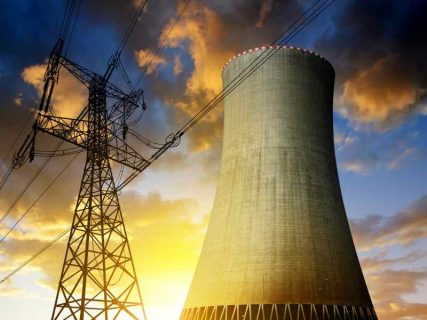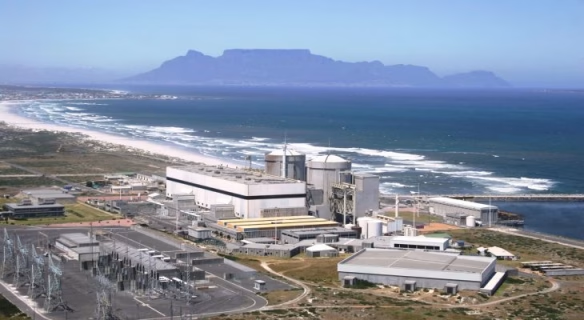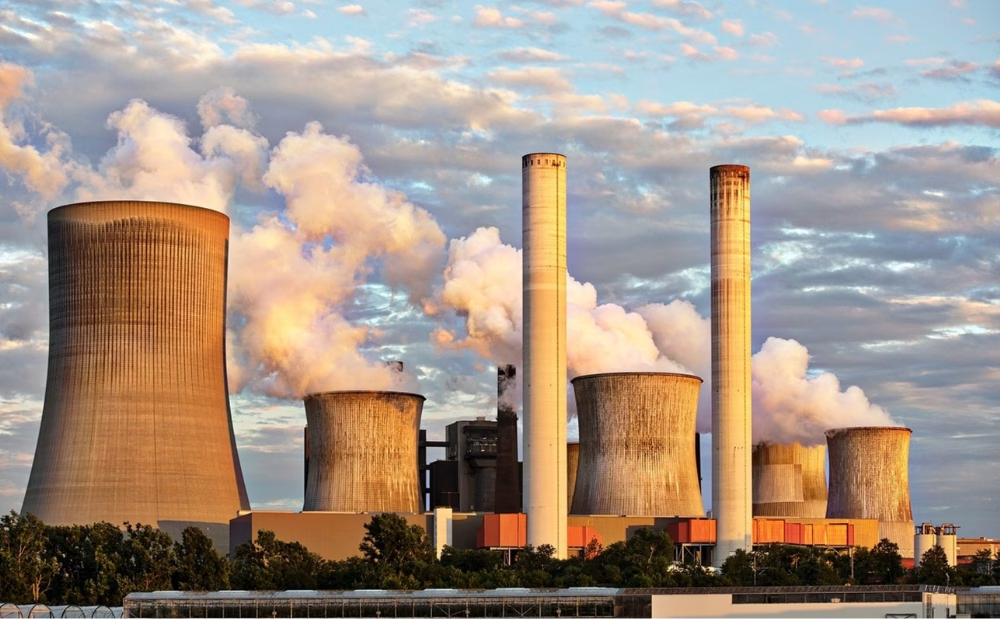South Africa has revived its nuclear reactor project and expand gas-fired power generation in its latest $128 billion new energy plan. The new national energy blueprint signals a major shift in its electricity strategy. The updated Integrated Resource Plan (IRP) was unveiled by Electricity and Energy Minister Kgosientsho Ramokgopa. Moreover, he noted that the country expects to invest 2.23 trillion rand ($128 billion) in energy infrastructure by 2042. The revised plan envisions nuclear and gas contributing 16% of total generation capacity within 14 years, up from the current 3%.
On the other hand, reliance on coal is projected to fall from 58% to 27%. Ramokgopa described the IRP as “the single biggest investment program of the post-apartheid era.” Furthermore, he noted that it will ensure that we are able to achieve energy security. South Africa, Africa’s most industrialized economy, has long depended on coal for electricity, enduring years of rolling blackouts that only began to ease last year. South Africa has been making moves in nuclear energy especially in regards to the country’s second nuclear reactor project. The plan seems to be in motion as the country pushes forward with plans for Africa’s second nuclear plant, a monumental feat.

South Africa’s government has noted its plans to move forward with plans to building Africa’s second nuclear plant and revive its modular nuclear reactor program. The project is part of a broader push to secure long-term energy stability. The insight was noted by Electricity Minister Kgosientsho Ramakgopa. The new plant, to be built in Duynefontein near Cape Town, will add four gigawatts of nuclear capacity initially, Ramakgopa said. South Africa’s plans for Africa’s second nuclear power plant, at Duynefontein near Cape Town, are still alive. The proposed project, with a planned capacity of 4,000 MW, aims to diversify the country’s electricity generation mix. Furthermore, it aims to successfully enhance energy security. Environmental authorization for the site has been upheld, and regulatory processes are ongoing.
Project Factsheet
Significance
- Part of South Africa’s new Integrated Resource Plan (IRP) outlining a $128 billion (R2.23 trillion) national energy infrastructure program.
- Also a strategic shift away from coal dependence towards a more diversified and sustainable energy mix.
- Aims to boost nuclear and gas generation capacity to 16% of total power supply in 14 years from an existing 3%.
- Focused on improving long-term energy security, reducing power shortages, and stabilizing industrial production.
Infrastructure:
- Includes reviving Eskom’s Pebble-Bed Modular Reactor (PBMR) project, originally set up in 1999 but delayed in 2010.
- The PBMR technology will bring in licensing revenue and stimulate new nuclear research and innovation.
- Complements the existing Koeberg Nuclear Power Station near Cape Town, producing 4.2% of South Africa’s electricity with a total output of 1,940 MW.
- Gas-fired power plant development also to be part of the new plan to support grid flexibility and cleaner energy transition.
Developer/Consortium:
- Eskom Holdings SOC Ltd as the major developer under the guidance of the Ministry of Electricity and Energy.
- Also handled by Minister Kgosientsho Ramokgopa, who referred to the plan as the greatest investment program of the post-apartheid era.
- Supported by local and international energy technology collaborators with a stake in nuclear development and infrastructure delivery.
- Environmental and regulatory regulation provided by South Africa’s National Nuclear Regulator (NNR) and associated agencies.
Funding/Timeline:
- Total investment in the IRP: $128 billion (R2.23 trillion) projected over 2042.
- Nuclear and gas development components set to roll out in phases over a period of 14 years.
- Also backed by a combination of public capital, private funding, and strategic energy partnerships.
- To modernize South Africa’s electricity grid and transition from 58% coal dependence to 27% by 2042.
The Significance of South Africa Nuclear Reactor Project in New Energy Plan
South Africa’s nuclear reactor project in the new energy plan revives Eskom Holdings SOC Ltd’s abandoned pebble-bed modular reactor program. First proposed in 1999, it is expected to generate billions in licensing revenue. However, the project was shelved in 2010 after the state utility spent $980 million developing the technology. However, environmental groups are already signalling resistance to the revival effort.

South Africa is home to the continent’s only commercial nuclear power plant, Koeberg. The Koeberg Nuclear Power Station, located near Cape Town, currently provides 4.2% of the nation’s electricity. It has a combined output of 1,940 MW from its two reactors. Across Africa, international investors and development partners are showing renewed interest in financing nuclear infrastructure. Moreover, it is viewed as a critical pathway to energy security, industrial growth, and climate resilience.

